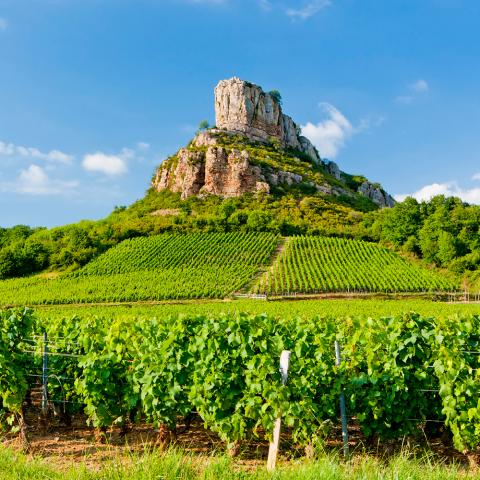France

France’s rich history of grape farming stretches back to Roman times, but the country is also the birthplace of modern winemaking and remains one of the world’s largest producers — so it’s no wonder that when we think of France, rolling hills and lush vineyards spring to mind as quickly as does the Eiffel Tower.
Crushing Grapes
Traditional methods are a way of life in the Burgundy region of France.
Traditional French grapes, like Cabernet Sauvignon, Chardonnay, Pinot Noir, Sauvignon Blanc and Syrah, have spread throughout the world as growers seek to emulate French practices, or to provide their own unique twists on classic wines.
The French take their wine very seriously, and its production is highly regulated by the government, which dictates the varieties planted, maximum and minimum yields, alcohol content, and the production techniques winemakers are allowed to use. Regional identity is critical, and grape varieties and wine characteristics vary from one area to the next. The French concept of terroir describes the influence of the place where the grapes are grown, including the soil, the exposure of a slope to the sun, and the specific microclimate of a town or even a single vineyard.
Alsace
One of the loveliest regions of France, Alsace compelled the Sun King, Louis XIV, to comment, “Quel beau jardin!” (“What a beautiful garden!”). Close to the German border in northeastern France, it has a cool climate that produces primarily light- to medium-bodied dry white wines, including Riesling, Pinot Blanc, Gewürztraminer, Muscat and Pinot Gris.
Bordeaux
This moderate southwestern region produces medium- to heavy-bodied dry reds alongside white wine and dessert whites. Look for red blends incorporating Cabernet Sauvignon, Merlot, Malbec, Cabernet Franc and Petit Verdot, as well as white blends with Sauvignon Blanc, Sémillon and Muscadelle.
Burgundy
A central region with a cool climate, Burgundy largely produces medium-bodied dry wines from the red grape Pinot Noir and the white grape Chardonnay. The Beaujolais district uses the red Gamay grape for both light- and medium-bodied wines.
Champagne
Champagne is a cool northern growing region with sole legal claim to the term “Champagne” for its sparkling wines. Chardonnay, Pinot Noir and Pinot Meunier make up the trio of grapes that serve as the basis for these famous bubblies.
Loire
A cool-climate region in northern France, the Loire is best known for dry white wines that are light- to medium-bodied, though reds and dessert wines are also produced. Look for white varieties like Muscadet, Chenin Blanc and Sauvignon Blanc, and the red varieties Cabernet Franc and Pinot Noir.
Northern Rhône
In the Northern Rhône area, a moderate climate produces medium- to heavy-bodied dry red wines (Syrah) and medium-bodied dry white wines (Marsanne, Roussanne, Viognier).
Southern Rhône
The Southern Rhône has a warm climate, producing medium- to heavy-bodied dry red blends (Grenache, Mourvèdre, Cinsault, Syrah) and medium-bodied dry white blends (Marsanne, Roussanne).
The South of France
From the charming vineyards of Provence to the vast stretches of the Midi, the climate here is tempered by the strong Mistral winds that blow off the Mediterranean Sea.
The Southwest
Tiny in comparison to the Midi and decidedly different in climate, southwestern France displays an Atlantic influence rather than a Mediterranean one.



